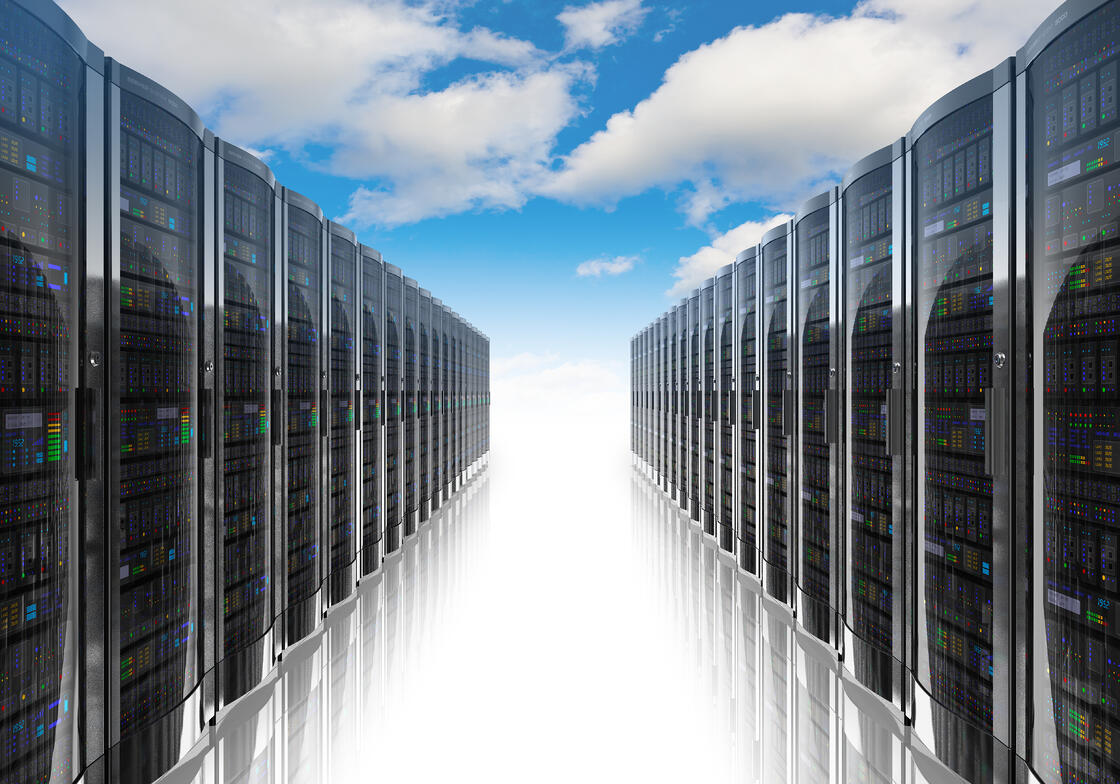
The Cloud: Soft, Fluffy, and Secure
“The Cloud” is often touted as being the greatest thing since sliced bread. It’s amazing!
It’s fast, it’s secure, it’s inexpensive, and it’s [insert your favourite feature here]! Honestly with the list of great features and things it can do, it’s a wonder that anyone buys there own computers anymore, right? But is the Cloud really all of the amazing things that it claims to be? Let’s tackle a few of the main claims and assumptions and see what comes up.
Claim #1: The Cloud is fast!
If we look at how much data most cloud services can throw around at a time, then yes, the cloud is very fast indeed. Cloud providers need to have lots of bandwidth in order to handle so many customers at the same time. The important question isn’t if your Cloud provider is fast; it’s if they are fast enough for you? This depends on several things but primarily the speed of your internet connection. You could be paying for the fastest cloud service in the world but it won’t make a difference if you’re maxing out the speed of your internet connection.
So then, how fast is your internet connection? How much of it are you using on a regular basis? Do you even know? These are pretty basic questions. Monitoring how much traffic is going over your network on the inside as well as to the internet will give you all sorts of useful information. Saturated internal switches can lead to all kinds of bizarre behavior. You may have plenty of bandwidth available to the internet but if there’s a lot of traffic on your internal network then it won’t matter.
Claim #2: The Cloud is cheap!
Yes, getting a cloud service is a lot cheaper then purchasing the hardware to provide the same service inside your network, at least in the short term. Rather than buying a server outright (which costs thousands of dollars) you’ve replaced that with a monthly fee. Sooner or later though, the total amount paid in the monthly fees will wind up being more then the cost of buying a server. So how do you actually compare a cloud service to a physical server in terms of cost? You price things out over time.
Total all your costs for buying a server. Remember to include the price for all the hardware and software. Then turn that total into a monthly cost over the expected lifetime of a the server. How long an organization holds onto computers is a bit flexible but it’s strongly recommended to aim for five to six years. Then compare the totals for each to see if which is actually cheaper. (Honestly, your cloud services are actually likely to be cheaper, but you still want to do the calculations to make sure you’re not overpaying when you don’t need to.)
Claim #3: The Cloud is secure!
This claim, on the other hand… Well, let’s not sugar coat this; it’s garbage. A cloud service is no more secure than anything else. They have access to the same tools and hardware that you do so an internal server can be made just as secure. The truth is you don’t even know how secure your cloud is because a lot of security features are simply outside your control. You don’t have the ability change them or even see what those settings are (which can be good because they could impact lots of customers).
So the assumption is that clouds are secure, but the reality is that you don’t actually know. You are relying on the presumed expertise of the provider to properly & securely setup their Cloud infrastructure. Have they setup something more secure than what your organization would be capable of if you setup the same services inhouse? Maybe. Just keep in mind that you are still subject to possible mistakes they make.
At the end of the day your experience with a cloud service will depend on a lot of different things. However, if you consider all the variables and ask yourself “What is going to have the biggest impact?”, then the answer is clear; It’s your network speed. In order to have a good experience with the cloud your network needs to be fast. You need a good connection to the internet and plenty of available bandwidth inside your network, and you should be monitoring both actively.
Active Monitoring
Active monitoring doesn’t mean you wait for users to complain about “things being slow”. While user feedback is great for identifying that problems exist, it’s not great for determining the root cause of a situation. Active monitoring means you need to be looking at traffic flows, not just on your firewall but on your internal switches as well.
But the truth is, active traffic monitoring alone still isn’t actually good enough. What are you going to do if you discover that your internal network is totally saturated with traffic? Just wait for it to go away? No. You need to be able to stop “bad” traffic without physically unplugging things. This means internal switches that are smart enough to be programmed, firewalls that have useful services configured (AV, IPS, App Control, Etc.) and people responsible for monitoring those devices who can actually configure them properly.
It’s a task that needs to be done all the time too, as Hamlet says “For some must watch, while some must sleep so runs the world away.”
If you have any questions about Monitoring Your Network Traffic, please reach out to your TRINUS Account Manager for some stress-free IT.
By Kind Courtesy of Your Friendly Neighbourhood Cyber-Man.

















